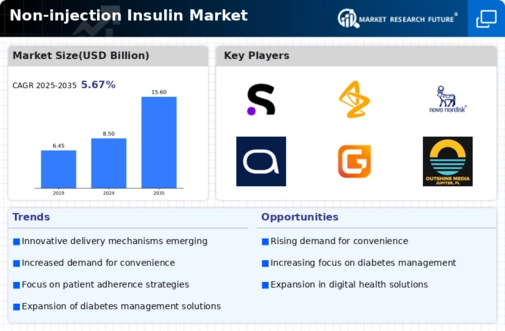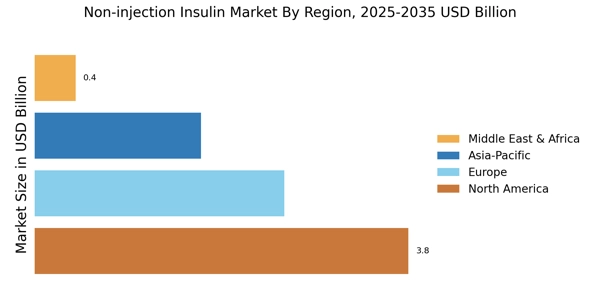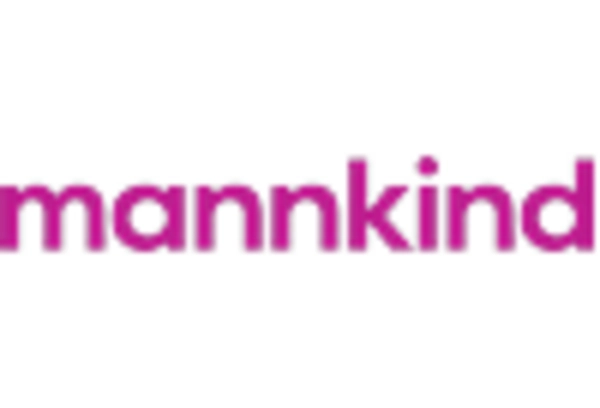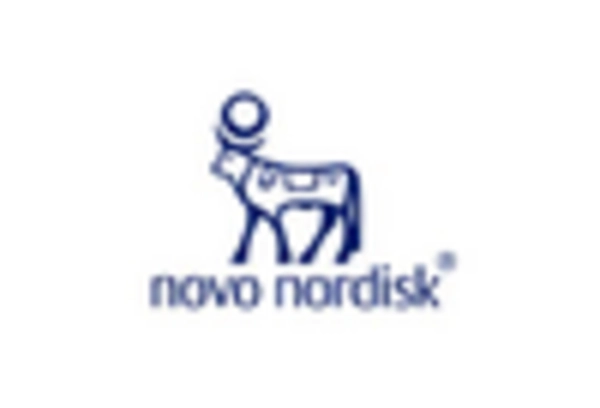Rising Prevalence of Diabetes
The increasing prevalence of diabetes worldwide is a critical driver for the Non-injection Insulin Market. With the International Diabetes Federation reporting that approximately 537 million adults are living with diabetes, the demand for alternative insulin delivery methods is escalating. Non-injection options are particularly appealing to those who are averse to needles, thus broadening the patient base. This growing population of diabetic patients is expected to drive the market, as more individuals seek convenient and less painful methods of insulin administration. The Non-injection Insulin Market is poised for growth as healthcare providers look for effective solutions to manage this chronic condition.
Patient-Centric Healthcare Trends
The Non-injection Insulin Market is increasingly influenced by patient-centric healthcare trends that prioritize comfort and convenience. Patients are actively seeking alternatives to traditional injection methods, which can be painful and inconvenient. This shift in consumer preference is prompting manufacturers to innovate and develop non-injection insulin solutions that align with patient needs. Market Research Future indicates that products designed with user experience in mind are more likely to gain traction among consumers. As healthcare systems evolve to focus on patient satisfaction, the Non-injection Insulin Market is expected to expand, driven by the demand for more user-friendly insulin delivery options.
Regulatory Support for Innovative Therapies
Regulatory bodies are increasingly supportive of innovative therapies in the Non-injection Insulin Market, which is likely to facilitate market growth. Streamlined approval processes for new delivery systems and formulations can accelerate the introduction of non-injection insulin products. For instance, recent initiatives aimed at expediting the review of diabetes management technologies suggest a favorable environment for innovation. This regulatory support not only encourages investment in research and development but also instills confidence among manufacturers. As a result, the Non-injection Insulin Market may see a rise in the number of new products entering the market, catering to diverse patient needs.
Integration of Health Technology and Wearable Devices
The integration of health technology and wearable devices is emerging as a significant driver in the Non-injection Insulin Market. Wearable devices that monitor glucose levels and provide real-time data can enhance the management of diabetes, making non-injection insulin options more appealing. The convergence of technology and healthcare is likely to lead to the development of smart insulin delivery systems that can automatically adjust dosages based on real-time glucose readings. This trend not only improves patient outcomes but also positions the Non-injection Insulin Market at the forefront of diabetes management solutions, potentially attracting a broader audience.
Technological Innovations in Non-injection Insulin Delivery
The Non-injection Insulin Market is experiencing a surge in technological innovations that enhance the delivery of insulin. Devices such as inhalers and transdermal patches are being developed, which could potentially improve patient compliance and ease of use. According to recent estimates, the market for inhaled insulin alone is projected to reach USD 1.5 billion by 2026. These advancements not only promise to make insulin administration less invasive but also aim to provide more accurate dosing. As technology continues to evolve, the Non-injection Insulin Market is likely to witness a shift towards more sophisticated delivery systems that cater to the needs of patients, thereby expanding the market further.


















Leave a Comment